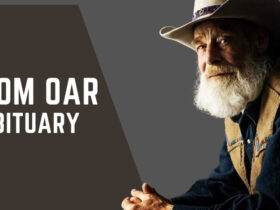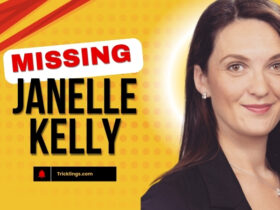I think about Dr. Martin Luther King Jr.’s “I Have a Dream” speech, and one question keeps circling in my mind: Would he be proud of how far we’ve come? Or would he be heartbroken by how far we still have to go?
To understand what that historic day felt like, step into the crowd and experience it firsthand. Standing in the Crowd: What It Felt Like to Hear MLK’s “I Have a Dream” Speech
Has the Dream Reached Our Schools?
I wonder what Dr. King would say if he walked into a public school today. Would he see the bright future he envisioned, or would he recognize the same struggles dressed in new clothes?
In 1963, segregation had technically ended in schools, but it hadn’t ended in reality. Black children went to underfunded schools, were given outdated textbooks, and were often set up to fail before they had a chance to succeed.
Fast forward to today – yes, Black students sit in the same classrooms as white students, but does that mean equality?
Not really.
The Funding Gap That Keeps Inequality Alive
Schools in predominantly Black communities still receive significantly less funding than schools in predominantly white areas. A recent study found that school districts serving mostly students of color receive about $2,700 less per student compared to majority-white districts. That translates to a 16% deficit in state and local revenue – a difference that affects everything from teacher salaries to technology access. 1
When funding is tied to local property taxes, schools in lower-income, historically redlined neighborhoods end up with fewer resources, fewer teachers, and fewer opportunities. Meanwhile, wealthier districts can afford better facilities, advanced placement programs, and extracurriculars that give students a competitive edge.
MLK’s speech spoke directly about the fight for educational equality—what did he say, and how does it compare to today? Breaking Down MLK’s “I Have a Dream” Speech Analysis 2025
The Achievement Gap Is About More Than Just Test Scores
This isn’t just about numbers on a budget sheet – it plays out in real ways every day. In New York City, only 16% of Black and Hispanic fourth graders are proficient in math, compared to 53% of white students. 2
Schools with more Black students often struggle with overcrowding, outdated textbooks, and limited access to technology. Without intervention, these gaps carry into adulthood, limiting access to higher education and well-paying jobs.
Education was supposed to be the great equalizer, but for many Black students, it’s still an uphill battle.
So, progress? Yes. But opportunity? Still out of reach for too many.
Voting Rights: Are We Truly Free to Vote?
Back in the 1960s, Black Americans risked their lives just to vote.
Let that sink in. Risked. Their. Lives.
They faced poll taxes, literacy tests, and outright violence – all just to have a say in their future. Some were beaten. Some were arrested. Some were killed.
And now, more than 60 years later, tell me – why does voting still feel like an obstacle course for so many Black Americans?
Same Suppression, Different Tactics
No one is standing at polling stations with clubs, but let’s not pretend voter suppression is over.
Ever stood in line for hours just to vote? That’s what’s happening to Black and Latino voters today. In Texas, 80% of polling place closures since 2012 happened in Black and Latino communities. Some voters now travel over 20 miles just to cast a ballot.
Can you imagine that? You take time off work, you get to the polling station – and the line stretches down the block. Do you wait? Or do you give up?
Laws like the Safeguard American Voter Eligibility (SAVE) Act now require documentary proof of citizenship to vote in federal elections.
But what if you don’t have access to those documents? What if you changed your name after marriage? Critics warn that this law could silence millions of eligible voters.3
“Oops, you’ve been removed from the voter rolls. Didn’t you get the notice?” Ohio recently removed 160,000 voters, labeling them “inactive.” Virginia purged 6,000 suspected non-citizens—later challenged by the Department of Justice. 4
These people weren’t criminals. They weren’t ineligible. They just didn’t vote in every single election. And now they have to fight to get their voting rights back.
Is This What Democracy Looks Like?
Dr. King’s dream wasn’t just about having the right to vote – it was about having a fair and equal opportunity to exercise that right.
Progress? Sure. But tell me – should we still be fighting for a right that was “won” decades ago?
Dr. King once said, “Our lives begin to end the day we become silent about things that matter.”
This matters. The question is – what are we going to do about it?
Has the Dream Reached Our Wallets?
The American Dream is supposed to be simple: work hard, and you’ll succeed.
But what if that success was never designed to be available to you?
Back in the 1960s, Black Americans were systematically locked out of good jobs, fair wages, homeownership, and financial security. A Black family could work twice as hard as a white family and still be denied a home loan, still be paid less, still be turned away from opportunities.
And today?
Still an Unfinished Battle
The typical white household has nearly 9.2 times the wealth of a Black household. In 2021, the median net worth of a white family was $250,400, while the median Black family had just $27,100 – a gap that has barely changed in decades. 5
Homeownership, a major source of generational wealth, is still out of reach for many Black families. In 2024, the Black homeownership rate stood at 44%, compared to 72% for white households. 6
Black workers continue to earn less for the same jobs. Even with a college degree, Black Americans still earn 15-20% less than their white counterparts in similar positions.
These aren’t just numbers on a report. They translate into real-life struggles – fewer savings, more debt, and limited opportunities to build wealth across generations.
A System Rigged Against Progress
Meet Michael Carter, a 32-year-old father from Chicago. He works two jobs – one as a delivery driver, another as a warehouse worker. He earns just enough to get by but not enough to get ahead.
“I applied for a home loan last year,” he says. “They told me my credit score wasn’t high enough. But when I asked a white coworker, who makes about what I do, he got approved for the same bank. It’s like the system is designed to keep us out.”
His experience isn’t unique. Studies show that Black mortgage applicants are still denied loans at twice the rate of white applicants.
Meanwhile, student loan debt is crushing Black graduates. The average Black college graduate owes $25,000 more in student loans than their white peers – making it even harder to invest in homes, businesses, or savings.
Is Economic Equality Still Just a Dream?
So, progress? Yes, laws have changed. Opportunities exist. But tell me – why does the average Black family still have to work twice as hard for half as much?
Dr. King once said:
“It is cruel jest to say to a bootless man that he ought to lift himself by his own bootstraps.”
Generations of discrimination don’t just disappear because a law changes. The dream of equal economic opportunity is still unfinished.
So what do we do now? How do we break the cycle? Let’s talk about it.
If MLK Were Speaking Today, What Would His Dream Sound Like?
Dr. King’s speech was not just about what was wrong—it was about what could be. His dream was a world where justice was not selective, where opportunity was not limited, and where race did not determine a person’s future.
But in 2025, are we any closer to that dream?
Imagine if Dr. King stood before us today—how would his speech change? If Martin Luther King Jr. Gave His “I Have a Dream” Speech in 2025
Drop your thoughts below. But more importantly – let’s not just talk. Let’s act.
- https://edtrust.org/press-room/school-districts-that-serve-students-of-color-receive-significantly-less-funding/ ↩︎
- https://nypost.com/2025/01/29/us-news/only-a-third-of-nyc-4th-graders-deemed-proficient-in-math-as-big-apple-students-lag-behind-state-national-averages-test-scores/ ↩︎
- https://www.beaumontenterprise.com/news/article/save-act-us-voter-suppression-married-women-20161084.php ↩︎
- https://en.wikipedia.org/wiki/2024_United_States_presidential_election ↩︎
- https://www.pewresearch.org/2023/12/04/wealth-gaps-across-racial-and-ethnic-groups/ ↩︎
- https://www.census.gov/library/stories/2024/04/wealth-by-race.html ↩︎













Leave a Reply